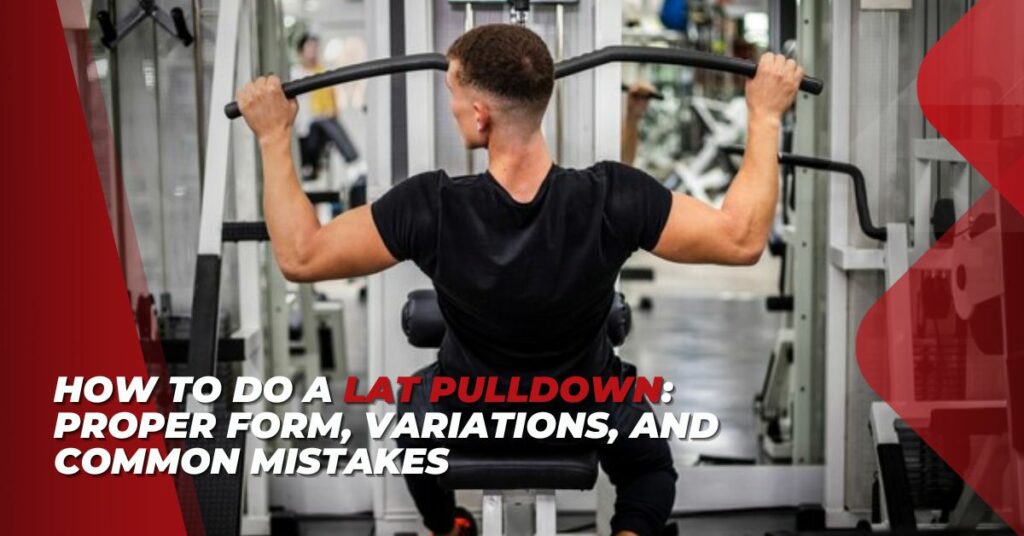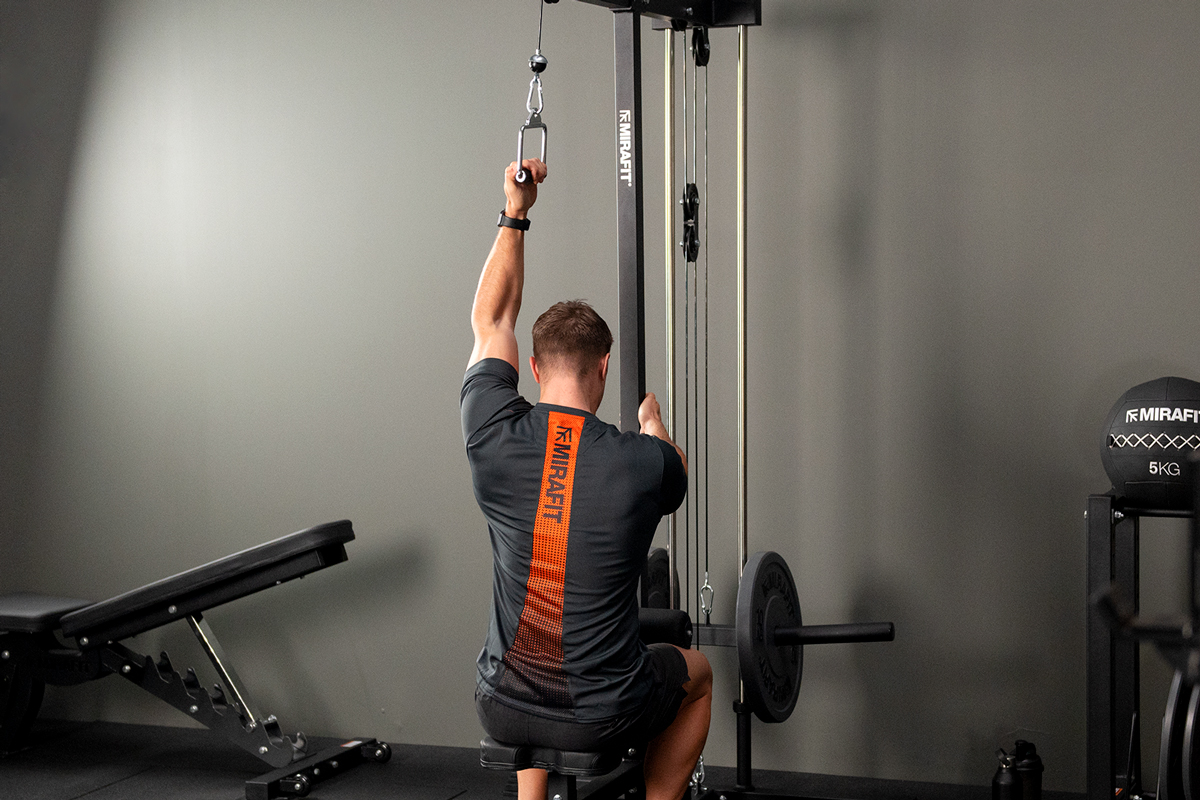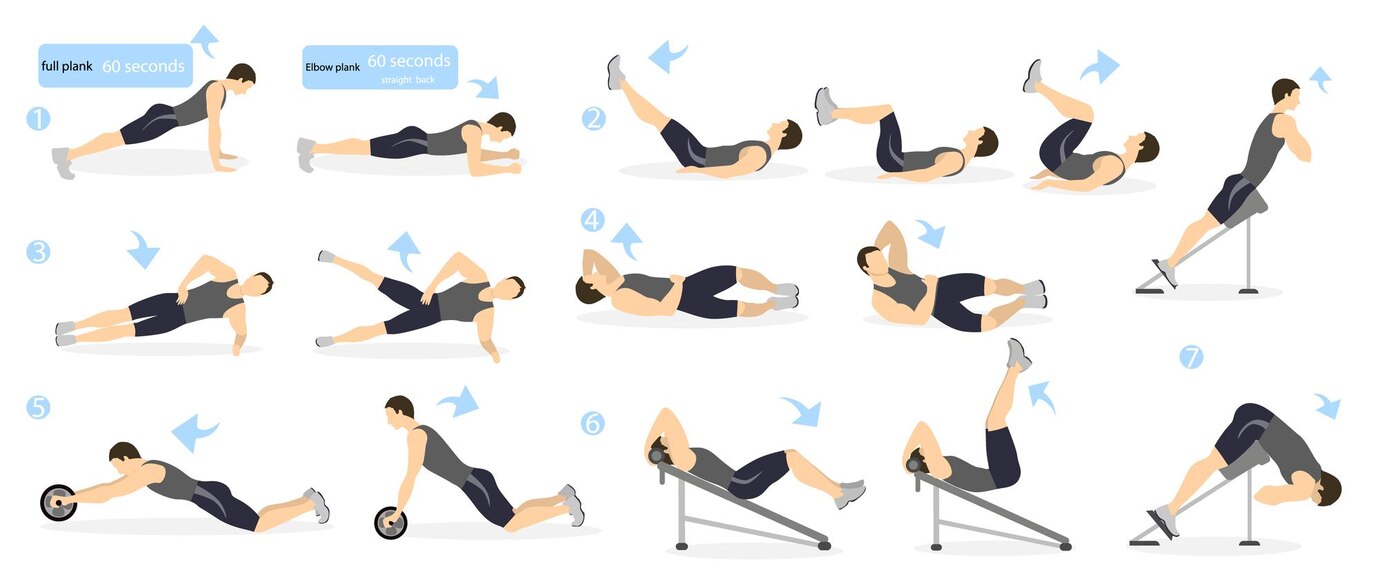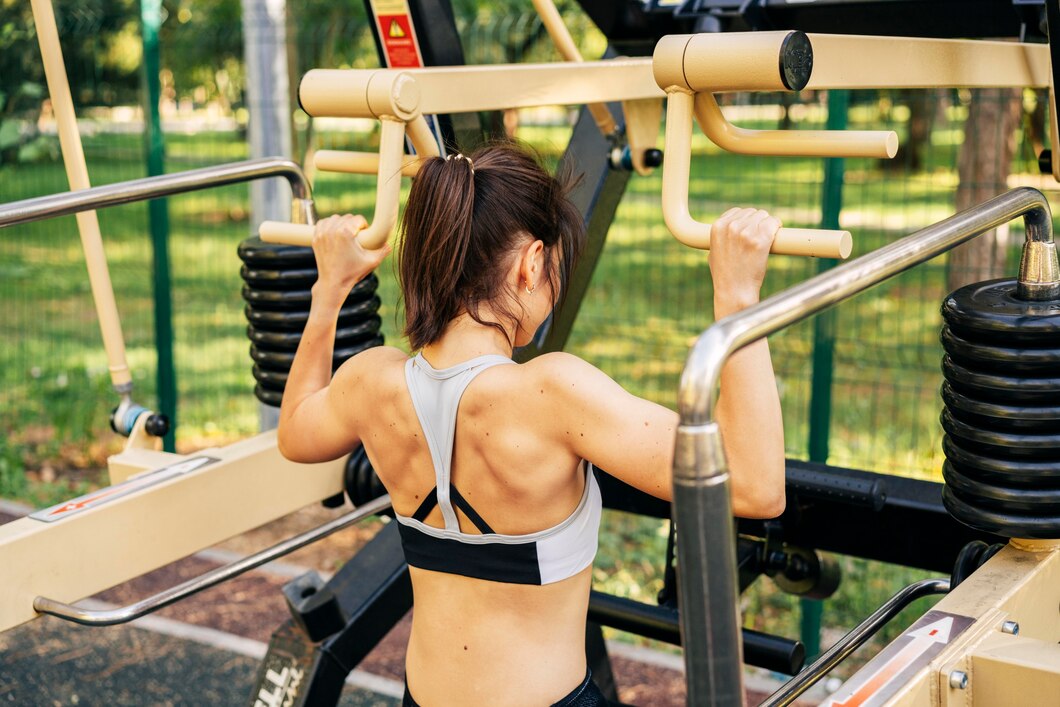
How to Do a Lat Pulldown: Proper Form, Variations, and Common Mistakes
Imagine an exercise so versatile that it not only carves out a majestic V-shaped back but also amps up your overall physical prowess.
Welcome to the world of the lat pulldown – a powerhouse move in the realm of upper-body workouts.
The lat pulldown is lauded for its multi-faceted impact, bolstering the upper back, shoulder girdle, arms, and forearms. This isn’t just a back-building exercise; it’s a full-scale upper-body enhancer.
In Vancouver’s bustling professional scene, where desk jobs and digital devices often dictate posture and fitness, the lat pulldown emerges as a saviour.
It’s not merely about aesthetic appeal; it’s about empowering your body against the daily grind.
Troy of Tsquared Vancouver Personal Training, with his rich expertise, champions this exercise for its profound ability to transform and fortify.
Whether you’re a swimmer slicing through water, a rugby player charging down the field, or a professional battling deadline, the lat pulldown is your ticket to elevated physical performance.
Join us as we unravel the intricacies of the lat pulldown, guiding you through its proper execution, variations, and common pitfalls.
Let’s unlock the strength and grace hidden within your muscles.
What is Lat Pulldown and Why It’s Important?
What is a Lat Pulldown?

At its core, the lat pulldown is a resistance training exercise performed on a specialized machine designed to target the latissimus dorsi muscles.
These are the broad, flat muscles spanning the width of your mid to lower back, crucial for arm movement and overall upper body strength.
Importance of Proper Form
Engaging in lat pulldown exercises is not just about working out; it’s about doing it right.
Proper form is the backbone that ensures you’re activating the latissimus dorsi, along with synergistic muscles like the biceps, rhomboids, and trapezius.
A well-executed lat pulldown does more than just build muscle; it enhances functional strength, which is essential for day-to-day activities, and lays a foundation for more advanced exercises like pull-ups.
Moreover, proper technique is pivotal in preventing injuries, particularly in the shoulder and neck areas, which are susceptible during upper body workouts.
How to Perform a Lat Pulldown
1. Setting Up the Machine
To start, adjust the lat pulldown machine to fit your body.
The knee pads should be positioned to comfortably secure your lower body, preventing lifting or movement during the exercise.
Select a weight that challenges you but allows you to maintain form throughout the set.
Remember, the goal is progressive overload, not instantaneous overload.
2. Proper Grip and Hand Placement
Your grip on the bar can vary, but for a standard lat pulldown, position your hands slightly wider than shoulder-width apart.
Ensure your grip is firm and your wrists remain neutral.
This hand placement helps activate the wider back muscles, contributing to that coveted V-shaped back.
3. Engaging the Back Muscles
As you pull the bar down, focus on driving the movement from your back muscles rather than your arms.
Start by retracting your shoulder blades, then pull the bar towards the top of your chest.
Visualize pulling through your elbows to maximize lat engagement.
This mental cue helps shift the focus from arm to back involvement, enhancing muscle activation.
4. Breathing Techniques
Breathing might seem secondary, but it’s a crucial element of any exercise.
Inhale as you release the bar upwards, and exhale forcefully as you pull the bar down.
This rhythmic breathing not only aids in muscle engagement but also stabilizes your core throughout the exercise.
5. Common Mistakes to Avoid
Many beginners tend to use momentum rather than muscle strength to bring the bar down.
This not only reduces the effectiveness of the exercise but also increases the risk of injury.
Another common error is releasing the bar too quickly after the pull-down phase, which can lead to a loss of muscle control and tension.
Aim for a controlled, steady movement in both directions.
Lat Pulldown Variations
1. Wide-Grip Lat Pulldown
For those aiming to sculpt an impressive V-shaped back, the wide-grip lat pulldown is your go-to.
This variant, requiring a grip broader than your shoulders, shifts the focus to the outer lats and upper back.

Start with your arms fully extended, and as you pull the bar down, concentrate on squeezing those back muscles as if you’re trying to hold a pencil between your shoulder blades.
Remember, it’s not about how much weight you can pull – it’s the quality of the movement that carves out that striking upper body definition.
2. Close-Grip Lat Pulldown
Now, if you want to target those tricky lower lat muscles for a more detailed back, the close-grip version steps up to the plate.
This variation involves a narrower grip and a more straightforward pulling angle, honing in on the central and lower parts of the back.
It’s a subtle shift from the wide grip, but it makes a significant difference in your back muscles workout routine.
3. Behind-the-Neck Lat Pulldown
Venturing into a more advanced territory, the behind-the-neck variation can be a game-changer for seasoned gym-goers.
While this style can increase the range of motion, it’s vital to proceed cautiously.
Ensure your shoulders are flexible enough to perform this without straining.
The key is to lower the bar gently down to the neck without hunching or straining.
This move can unlock new levels of upper body strength and is a valuable tool in preventing workout plateaus.
4. Single-Arm Lat Pulldown
Unilateral exercises like the single-arm lat pulldown are brilliant for addressing muscle imbalances and enhancing muscle coordination.
By isolating each side of your back, you’re not only fortifying your lat muscles but also boosting overall muscle symmetry and balance.
This variant is a testament to the saying, “Sometimes, focusing on one thing at a time can lead to comprehensive progress.”
Benefits of Lat Pulldowns

1. Strengthening the Back Muscles
Lat pulldowns are a powerhouse for building a robust and well-defined back.
They engage a wide range of muscles, from the broad latissimus dorsi to the smaller stabilizers.
Regular inclusion of this exercise in your routine can result in significant gains in back strength and muscle mass, crucial for overall upper body fitness.
2. Enhancing Posture
In the age of desk jobs and constant screen time, a strong back is your best ally against the dreaded slouch.
Lat pulldowns work wonders in reinforcing the muscles that keep your spine aligned and posture upright.
By strengthening these muscles, you’re not just looking better; you’re also combating potential back issues and boosting your everyday energy levels.
3. Aiding in Pull-Ups
Dreaming of nailing those pull-ups? Lat pulldowns are your stepping stone.
They simulate similar muscle movements and help build the requisite strength.
What starts as a lat pulldown journey can smoothly transition into achieving those first full pull-ups, a milestone in any fitness enthusiast’s journey.
Incorporating Lat Pulldowns into Your Workout Routine
Frequency and Repetitions
Finding the sweet spot for lat pulldowns in your workout regimen is key.
For beginners, two sessions per week can kickstart strength development without overloading the muscles.
Aim for 3 sets of 8-12 reps, focusing on form over weight.
As you progress, you can gradually increase the frequency and intensity, tailoring it to your personal fitness goals.
Pairing with Other Exercises
To maximize your workout, pair lat pulldowns with exercises that complement the muscle groups involved.
A balanced session might include rows for mid-back development, bicep curls for arm strength, and some core exercises for stability.
This approach ensures a holistic upper body workout routine.
Sample Lat Pulldown Workout
- Start with a 10-minute cardio warm-up.
- Proceed with 3 sets of wide-grip lat pulldowns.
- Follow up with 3 sets of rows, focusing on the mid-back.
- Incorporate 3 sets of bicep curls.
- Finish with a core circuit and a cool-down stretch.
By integrating these variations and tips, your journey with lat pulldowns will contribute to a stronger, more defined back.
It also paves the way for a more balanced, energetic, and injury-resistant body.
Overcoming Challenges
1. Building Strength Progressively
Journeying into the realm of lat pulldowns, the mantra is: start light, grow might.
It’s tempting to heave heavy weights immediately, but the savvy approach lies in gradual progression.
Kick off with a weight that allows you to maintain impeccable form for 8-10 reps.
As the weeks roll by, nudge the weight up incrementally.
This tactic isn’t just about amplifying muscle power; it’s about nurturing a sustainable growth trajectory.
Remember, in pursuing upper body strength, patience isn’t just a virtue – it’s your ally.
2. Avoiding Plateaus
Ever hit that exasperating phase where no matter how hard you push, your gains just seem to stall?
That, my fitness friends, is a plateau.
To outmaneuver this common training hurdle, variety is your secret weapon.
Alternate between the variations of lat pulldowns – wide grip today, close grip the next.
Consider integrating other latissimus dorsi exercises into your routine.
This not only challenges your muscles in novel ways but also keeps your workouts fresh and motivating.
Think of it as having a diverse toolkit for building that coveted V-shaped back.
3. Preventing Injuries
Injuries can be a real setback in your strength journey.
To sidestep these unwanted guests, let’s spotlight two key allies: form and listening to your body.
Ensure your movement is fluid and controlled – no jerky motions or cheating with momentum.
Mix in exercises that bolster your overall back health and posture.
If a niggle or strain whispers, don’t just brush it off.
Adapt your routine, maybe lighten the load or focus on recovery.
It’s about training smart, not just hard.
Wrap Up
So, there you have it – your roadmap to mastering the lat pulldown, a cornerstone in sculpting a resilient and defined upper back.
This journey is as much about building physical strength as it is about fostering discipline and patience.
With Troy of Tsquared in your corner, you’re not just tackling a machine at the gym; you’re unlocking a symphony of strength, posture, and confidence.
Eager to explore how the lat pulldown can revolutionize your fitness narrative?
Dive into Tsquared’s world, where personalized training isn’t just a phrase – it’s a promise.
From one-on-one sessions to small group dynamics, Troy’s expertise is your guiding star to a stronger, more empowered you.
Step into this journey of transformation, and let’s redefine what strength means to you.
Your V-shaped back, elevated posture, and newfound confidence await.
FAQs
1. Can Lat Pulldowns help me get better at pull-ups?
Certainly! Think of lat pulldowns as the training wheels for your pull-up journey.
They fortify the same muscle groups, priming you for the real deal.
Gradually, as your strength and technique evolve, you’ll find yourself transitioning to pull-ups with greater ease.
2. How often should I do Lat Pulldowns in my workout routine?
Ideally, weaving lat pulldowns into your upper body routine twice a week strikes a balance between progress and recovery.
This frequency is a sweet spot for stimulating growth without overtaxing your muscles.
As always, tailor this to align with your personal fitness goals and overall exercise regimen.
